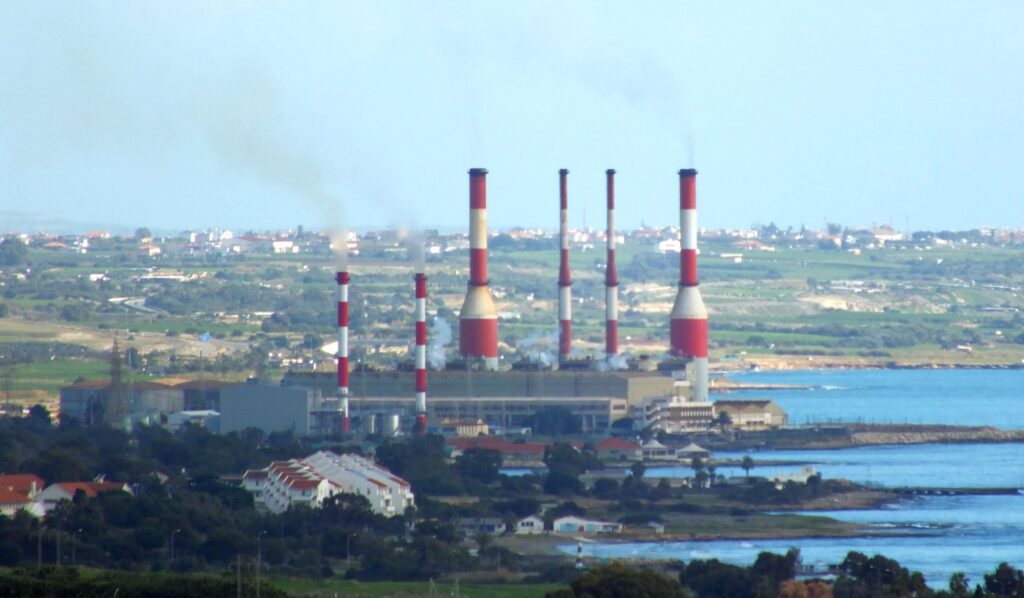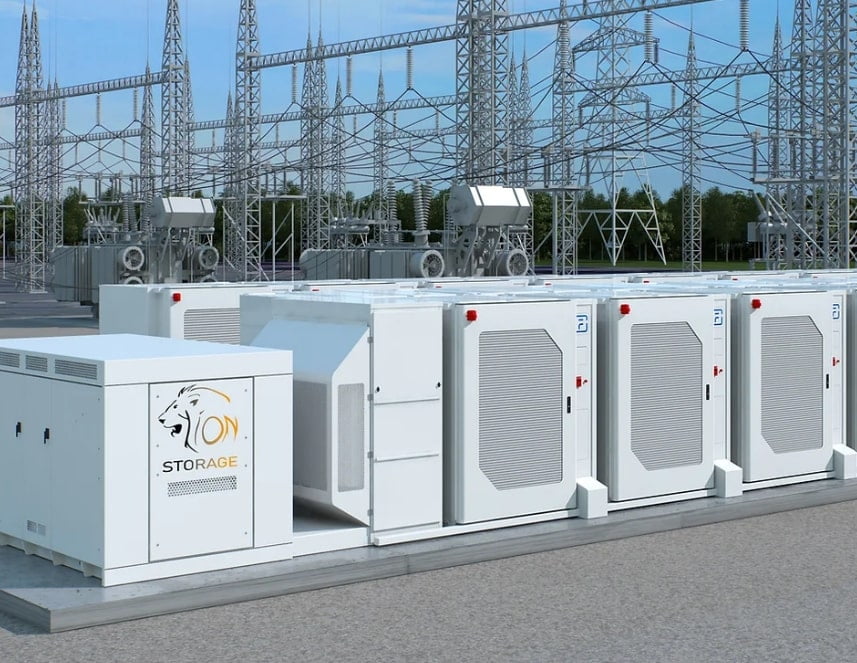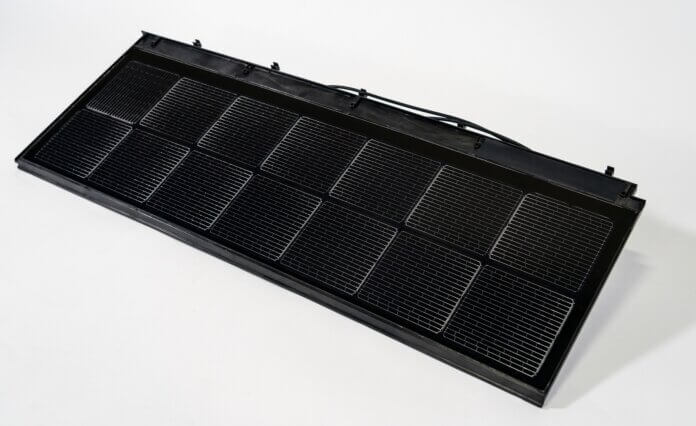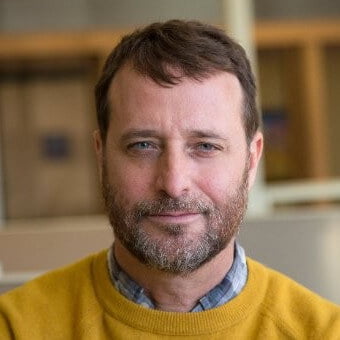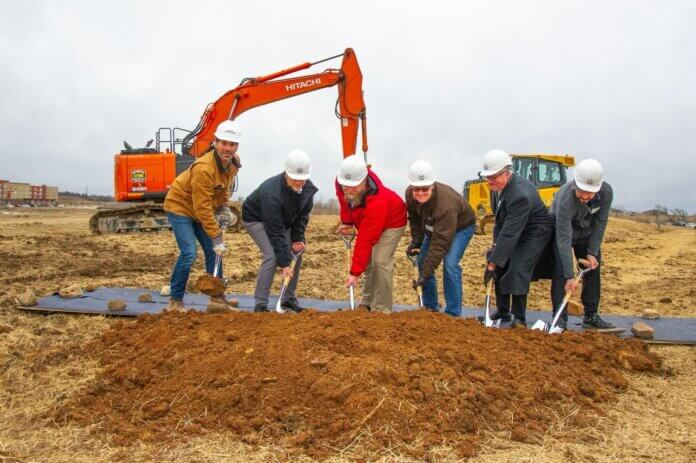Lion Storage is targeting at least 850/900MW of battery storage deployments in the Dutch market in the next few years. Image: Lion Storage.
The Netherlands needs 10GW of battery storage by 2030 and, while the market is being held back by onerous grid fees, developers like Lion Storage are working on deploying multi-hundred megawatt systems.
Movement in the country’s battery energy storage system (BESS) market has picked up over the past 12 months. The largest operational system in the country was brought online in October last year by GIGA Buffalo, followed in quick succession by the largest under-construction projects being launched by Rolls-Royce and Alfen in November 2022 and February 2023 respectively.
Lion Storage has early-storage projects in the pipeline with two totalling 350MW/1,400MWh targeting a 2025 commercial operation date (COD) and another two with 400MW/1,600MWh combined capacity for 2026.
In an in-person interview at the Energy Storage Summit in London last month, the firm’s co-founder and CTO Jeroen Althoff talked Energy-Storage.news through the company’s plans, market drivers, regulatory issues, future value stack and other challenges he sees.
Energy-Storage.news: Can you introduce Lion Storage and its plans to our readers?
Jeroen Althoff: To my knowledge we are the only independent developer who’s exclusively going for the big standalone storage assets connected to the Dutch high-voltage grid. Most of the batteries that we see being developed in the Netherlands, at this point in time are basically all mid voltage, not high voltage. So it’s typically assets, like 10, 20 or 30 megawatts, while the ones we’re developing are all 100 megawatts or higher. The smallest one we currently have under development is 150MW.
All the projects we are developing are potentially capable of four-hour durations, but it depends on the buyer in the end, whether they want to do some system integration etc. It could go down to two hours, but I would advise against going lower than that given the future market outlook.
We typically develop the assets to the final investment decision (FID) stage, at which point we sell to a strategic or financial buyer. The timeline to get to operations from that point on is typically two to two-and-a-half years.
Developing the grid and land rights and obtaining permits can take a year or more, and then you have financing. That can be shorter or longer depending on how you structure. If you structure it with a lot of offtake contracts it will be more debt-funded, if you go the merchant route there will be more equity.
We have around 900MW under development and an ambition for more than that.
What are the drivers for the battery storage market in the Netherlands?
The Netherlands is a really interesting market for energy storage. It’s at the crossroads of a lot of renewable energy with the North Sea and the countries around it.
There is an enormous amount of wind and solar being built relative to the size of the country. That intermittency is really driving the need for more flexibility, because the amount coming on stream is causing real headaches to the grid operator.
The Netherlands is well-interconnected but this is limited to about 8 or 9GW , whereas only a part of that can be used to supply flexibility when needed.
Battery storage is basically the only game in town to fill that gap in flexibility that is emerging because of all this.
But we hear regulation is still an issue – can you explain these and some of the solutions being explored?
Grid operators and regulators are struggling to contend with this new beast. Seeing that batteries charge from the grid, they are considered (offtake) users and therefore have to pay transportation fees. Today, grid fees in The Netherlands are really high, making it less attractive to develop batteries compared to neighboring countries like Germany and Belgium.
The government, regulator and grid operators are looking at ways to solve it. One way is to go the exempt route where batteries pay the same grid fees as generators. This is actually required in EU directives and the Netherlands should comply with that, so there’s a debate here about how to do that.
The other is a non-firm grid connection. This means that rather than a conventional firm one, where you have say 150MW grid access to charge or discharge as you see fit throughout the year, with a non-firm connection the grid operator could cut you out of the market temporarily.
This can obviously compromise your revenue model but at the same time it reduces the grid fees substantially.
Which solution the country will go for in the end is not yet clear, but what is clear is that we need to get to a level playing field with other countries like Belgium and Germany. Investment capital will first go to those other markets, simply because the business case is better over there.
Are your projects dependent on this situation being fixed?
Yes and no. In the end, by 2030, the Netherlands will need around 10GW of battery storage to accommodate the flexibility needs of the changing energy mix according to the grid operator TenneT. So for that capacity to be built, the problem needs to be solved one way or another, it’s more a question of when and what it will look like.
But this does mean that today it’s not easy to get large projects financed. And it also means that we need to fix the situation quickly and well in advance of 2027 because that 10 GW needs to be in development by then to ensure security of supply.
Any other challenges our readers should be aware of?
Workforce in the electricity sector is a major issue – just finding people to build and connect all this stuff.
Finding land but more specifically finding land with a grid connection is another big challenge.
What does the revenue stack look like for these projects?
These will be big assets so they’ll need to tap into all the accessible markets: wholesale trading but also all the balancing markets which are around 500MW in the Netherlands, though you can provide those services for other countries too.
There’s also the opportunity for helping the grid operator with redispatch or congestion management. This is an interesting opportunity for batteries, as by the end of this year 100% of that volume should be traded through an exchange making it very accessible.
A grid operator will submit an order on the exchange, saying ‘we have a constraint in this location and we need someone here to increase production by 30MW and someone over there to decrease production by 30MW’. The grid operators will then pay the difference between those prices, effectively resolving the congestion. That’s a rapidly rising market because of the fast increase in electrification and resulting congestion as the grid can not be upgraded at the same pace.
The amount of redispatch has risen substantially in the last few years, and it’s one that batteries can really target. Before they were spending around €80 million a year on this and now it has risen to about €500 million.
Reactive power is another interesting one. With the rapid electrification going on, there is a big and increasing need for reactive power supply to help regulate grid voltage.
So in the end it’s a complete stack that needs to be optimized and that will drive the valuation of the assets.
Which technology providers are you going for?
We’re agnostic, mostly Tier 1 suppliers, the usual candidates like Tesla, Fluence and Wartsila, but we’re pretty open. Some have higher energy density, some have better thermal management so you have better degradation profiles.
Lion Storage CTO Jeroen Althoff.
What about the potential need for long-duration energy storage (LDES)?
I don’t see a need for flow batteries by 2026 in the Dutch market, maybe by the mid-late 2030s. Clearly if you get to a completely renewable installed base lithium-ion alone will not be sufficient.
The technology is not mature yet. Name me one flow battery supplier who can deliver at scale what is needed in the market. And they can never really tell you what the long-term price of the system will be at scale. They tell you the prototype price but that is obviously not the same.
Continue reading

